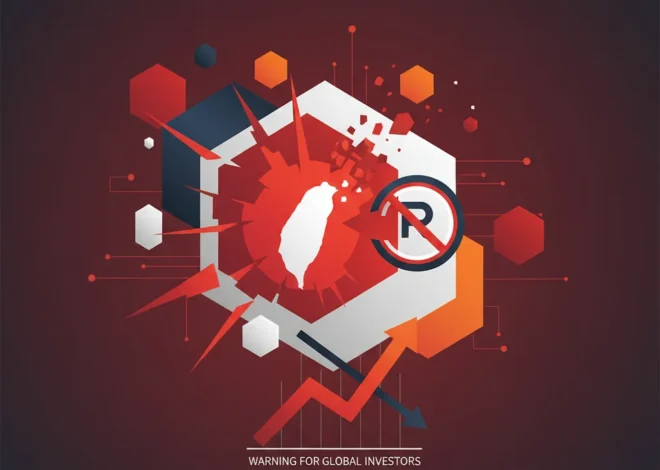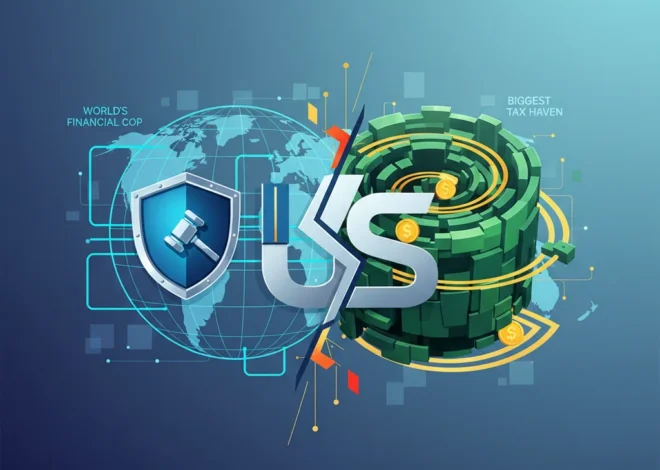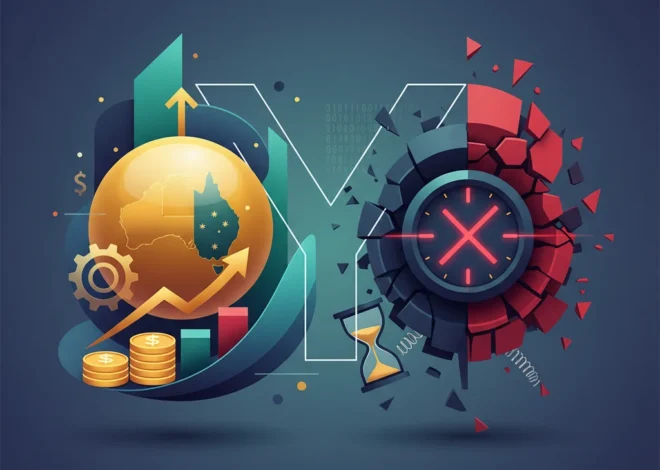
Inside the Gilded Cage: Global Finance on the Brink as US-China Tensions Boil Over
Imagine a room shimmering with gold leaf, a place where the physical embodiment of a nation’s wealth once resided. This is the Cash Room at the US Treasury, a gilded space designed to impress and project power. It was here, amidst the opulent ghosts of 19th-century finance, that the world’s most powerful economic leaders gathered for the International Monetary Fund (IMF) Spring Meetings. Yet, beneath the polished veneer of diplomacy, a palpable tension filled the air. After a week of discussions with ministers, central bankers, and negotiators, one thing is clear: the era of cooperative global economic management is fracturing, replaced by a new reality of geopolitical rivalry and strategic competition.
The meetings in Washington D.C. weren’t about celebrating a global recovery. Instead, they felt like a high-stakes strategy session for a world pulling apart at the seams. The primary fault line? The widening chasm between a surprisingly resilient United States and a strategically ambitious China, with the rest of the world caught in the economic crossfire. This isn’t just another chapter in global economics; it’s a fundamental reshaping of the world order, with profound implications for investing, trading, and the future of international finance.
The American Anomaly: A Double-Edged Sword for the Global Economy
The central paradox of the current global economy is the sheer strength of the United States. While Europe stagnates and other regions struggle, the US continues to defy expectations with robust growth and low unemployment. This American exceptionalism, however, is proving to be a double-edged sword. A strong US economy means the Federal Reserve has little incentive to cut interest rates. Consequently, the US dollar has surged to multi-decade highs against other currencies.
For American tourists, a strong dollar is a boon. For the rest of the world, it’s a source of immense pressure. A dominant dollar makes crucial imports like oil and food more expensive for other nations, fueling inflation. It also dramatically increases the burden of dollar-denominated debt held by emerging markets, raising the spectre of financial instability. As one senior European official noted, the world needs a “weaker dollar,” but the strength of the US economy makes that unlikely. This divergence is creating a tense environment where the policy decisions of one nation’s central banking authority have outsized and often painful effects on everyone else.
This situation puts central banks in Europe and elsewhere in an incredibly difficult position. They face pressure to cut their own rates to stimulate their languishing economies, but doing so would further devalue their currencies against the dollar, potentially worsening inflation. It’s a classic “rock and a hard place” scenario, and it dominated the private conversations in Washington.
Steel and Sovereignty: Decoding the UK-EU Tariff Standoff and Its Impact on the Global Economy
The Dragon in the Room: A New Front in the US-China Economic War
If the strong dollar was the elephant in the room, the dragon was breathing fire. The most significant development from the meetings was the crystallization of America’s new economic line against China. In a landmark speech, US Treasury Secretary Janet Yellen didn’t mince words. She accused China of creating global instability through “unfair economic practices” and massive state subsidies, particularly in the green technology sector (source). The core of her argument is that China is manufacturing far more solar panels, electric vehicles (EVs), and lithium-ion batteries than its domestic market can absorb, and is then dumping this “overcapacity” onto global markets at artificially low prices.
This isn’t just a trade dispute; it’s a strategic battle for the industries of the future. The US and Europe, having invested billions in their own green transitions, see China’s actions as a direct threat to their industrial base. Yellen’s speech signals that Washington is preparing to erect new trade barriers to protect its burgeoning green tech sector. This marks a significant escalation, moving beyond tariffs on steel and washing machines to the front lines of the 21st-century economy. The era of open markets is giving way to an age of managed, and often confrontational, trading relationships.
The Chinese delegation, naturally, sees things differently. They view their industrial policy as a legitimate development strategy and accuse the West of protectionist hypocrisy. This fundamental disagreement ensures that economic friction will be a defining feature of the global landscape for the foreseeable future, impacting everything from supply chains to the stock market performance of multinational corporations.
A World of Divergence: Comparing the Economic Front-Runners
The stark differences in economic fortunes were a recurring theme. While the US charts a course of surprising growth, the UK and Eurozone are navigating choppier waters. The UK, for its part, has regained a “credibility premium” in financial markets after the turmoil of recent years, a point UK Chancellor Jeremy Hunt was keen to emphasize (source). However, this credibility has not yet translated into robust growth, with the UK’s outlook remaining one of the weakest among major economies.
This divergence is not just an academic point; it has real-world consequences for monetary policy and international capital flows. The table below provides a snapshot of this fractured economic landscape.
| Economic Bloc | Projected 2024 GDP Growth (IMF) | Latest Inflation Rate (Approx.) | Current Central Bank Policy Rate |
|---|---|---|---|
| United States | 2.7% | 3.5% | 5.25% – 5.50% |
| Eurozone | 0.8% | 2.4% | 4.50% |
| United Kingdom | 0.5% | 3.2% | 5.25% |
| China | 4.6% | 0.1% | 3.45% |
As the data illustrates, policymakers are not working from the same playbook because they are not even in the same game. The US is fighting persistent inflation driven by a hot economy, while China is bordering on deflation and Europe is battling stagnation. This lack of synchronization makes coordinated global action nearly impossible.
Beyond the Bourse: Why Marseille's Luxury Real Estate is the Ultimate Alternative Investment
The Unseen Disruption: Is Fintech the New Geopolitical Arena?
While the titans of global finance debated macroeconomic policy and trade disputes, an undercurrent of technological change was largely absent from the main stage, yet it may prove to be the most disruptive force of all. The rise of financial technology (fintech) and blockchain-based systems presents both a challenge and an opportunity in this fragmented world.
In a world increasingly defined by sanctions and financial warfare, the appeal of alternative payment systems that bypass the US-dollar-dominated SWIFT network is growing. Nations looking to insulate themselves from American economic pressure are actively exploring central bank digital currencies (CBDCs) and blockchain-based settlement rails. While still in its infancy, this technological arms race in fintech could fundamentally alter the plumbing of global finance. The very structure of international banking is up for grabs.
This technological shift is not just about geopolitics. The efficiencies and innovations offered by financial technology are already transforming retail and institutional investing. However, the speed of this change may be creating new, poorly understood systemic risks that the leaders gathered in their gilded rooms are not yet equipped to handle. The next financial crisis may not originate in the housing market, but in the failure of a decentralized finance (DeFi) protocol or a major stablecoin.
Conclusion: Navigating the New Economic Disorder
Leaving Washington, the overriding feeling was not one of crisis, but of a profound and unsettling transition. The old rules that governed the global economy for decades are being rewritten in real-time. The world’s financial elite, gathered in rooms built to project an image of timeless stability (source), are now stewards of a system defined by instability and competition.
For investors, business leaders, and policymakers, the key takeaway is that interdependence is no longer a guarantee of peace or prosperity. We are entering an era of strategic rivalry where economic tools are wielded as weapons. Navigating this new landscape requires a more sophisticated understanding of the interplay between geopolitics, technology, and economics. The gilded cage of global finance is rattling, and success will belong to those who can adapt to the new, more dangerous, and uncertain world outside its doors.
The Dragon's Embrace: Decoding the High-Stakes Economic Gamble Between India and China


